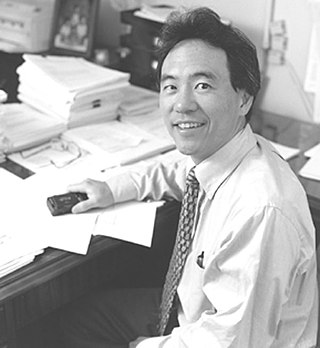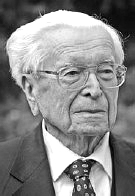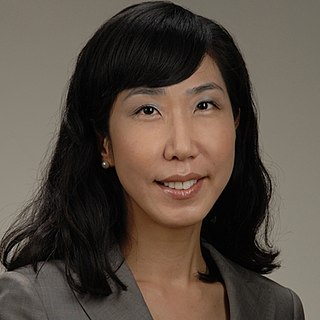
Lymphoma is a group of blood and lymph tumors that develop from lymphocytes. The name typically refers to just the cancerous versions rather than all such tumours. Signs and symptoms may include enlarged lymph nodes, fever, drenching sweats, unintended weight loss, itching, and constantly feeling tired. The enlarged lymph nodes are usually painless. The sweats are most common at night.
The National Cancer Institute (NCI) coordinates the United States National Cancer Program and is part of the National Institutes of Health (NIH), which is one of eleven agencies that are part of the U.S. Department of Health and Human Services. The NCI conducts and supports research, training, health information dissemination, and other activities related to the causes, prevention, diagnosis, and treatment of cancer; the supportive care of cancer patients and their families; and cancer survivorship.
Splenic marginal zone lymphoma (SMZL) is a type of marginal zone lymphoma, a cancer made up of B-cells that replace the normal architecture of the white pulp of the spleen. The neoplastic cells are both small lymphocytes and larger, transformed lymphoblasts, and they invade the mantle zone of splenic follicles and erode the marginal zone, ultimately invading the red pulp of the spleen. Frequently, the bone marrow and splenic hilar lymph nodes are involved along with the peripheral blood. The neoplastic cells circulating in the peripheral blood are termed villous lymphocytes due to their characteristic appearance.

Aggressive NK-cell leukemia is a disease with an aggressive, systemic proliferation of natural killer cells and a rapidly declining clinical course.
Hepatosplenic T-cell lymphoma is a rare form of lymphoma that is generally incurable, except in the case of an allogeneic stem cell transplant. It is a systemic neoplasm comprising medium-sized cytotoxic T-cells that show significant sinusoidal infiltration in the liver, spleen, and bone marrow.
T-lymphoblastic leukemia/lymphoma, previously labeled precursor T-lymphoblastic leukemia/lymphoma is a form of lymphoid leukemia and lymphoma in which too many T-cell lymphoblasts are found in the blood, bone marrow, and tissues, particularly mediastinal lymph nodes. Labeling as leukemia or lymphoma depends on which feature is more pronounced in a given situation, but has no biological or treatment implication.

Larry Kwak is an American cancer researcher who works at City of Hope in Duarte, California and is the Director of the Toni Stephenson Lymphoma Center at City of Hope. Dr. Kwak formerly worked at the University of Texas MD Anderson Cancer Center. He was included on Time's list of 2010's most influential people.
For the Irish playwright and screenwriter, see Nancy Harris.
William Douglas Figg is an American scientist (pharmacologist). He is a senior investigator (tenured) at the National Cancer Institute (NCI), National Institutes of Health (NIH), Bethesda, Maryland. He holds multiple titles within the NCI: Associate Director of the Center for Cancer Research, Co-Director of the Office of Translational Resources, Acting Branch Chief for the Genitourinary Malignancies Branch, Chief of the Clinical Pharmacology Program, and head of the Molecular Pharmacology Section. Figg is also the Co-chief of Basic Research at the Center for Prostate Disease Research within the Walter Reed National Military Medical Center – Murtha Cancer Center in Bethesda, Maryland.

Karl Lennert, M.D. was a German physician and pathologist.
Thomas Grogan is an American professor, pathologist and founder of Ventana Medical Systems, Inc. He currently holds the positions of Professor of Pathology at the University of Arizona College of Medicine and Chief Scientific Officer at Ventana.
Primary cutaneous follicle center lymphoma is a type of lymphoma. It was recognized as a distinct disease entity in the 2008 WHO classification. PCFCL had been previously conceived as a variant of follicular lymphoma (FL).
Epstein–Barr virus positive diffuse large B-cell lymphoma, not otherwise specified is a form of diffuse large B-cell lymphomas (DLBCL) accounting for around 10-15% of DLBCL cases. DLBCL are lymphomas in which B-cell lymphocytes proliferate excessively, invade multiple tissues, and often causes life-threatening tissue damage. EBV+ DLBCL is distinguished from DLBCL in that virtually all the large B cells in the tissue, infiltrates of the Epstien-Barr virus (EBV) express EBV genes characteristic of the virus's latency III or II phase. EBV is a ubiquitous virus, infecting around 95% of the world population.

Lauren V. Wood is an American allergist, immunologist, and staff physician at the National Cancer Institute (NCI) at the National Institutes of Health (NIH) in Bethesda, Maryland, where she has served as a principal investigator. She is known for conducting studies of vaccines for cancer, Human papillomavirus (HPV), Hepatitis C, and HIV especially for use with children, teens and young adults. She holds the rank of captain in the U.S. Public Health Service (PHS).
Mature T-cell lymphoma, also called peripheral T-cell lymphoma, is a group of rare, aggressive lymphomas that develop from mature white blood cells and originate from lymphoid tissues outside of the bone marrow. Mature T-cell lymphoma is under the category of non-Hodgkin lymphoma. Mature T-cell lymphomas account for 10% to 15% of all lymphomas and is more common in Asia than in Europe and America. Its common subtypes include angioimmunoblastic T-cell lymphoma, anaplastic large cell lymphoma and peripheral T-cell lymphoma not otherwise specified. While different subtypes have variable symptoms, common symptoms include enlarged painless lymph nodes, fever, weight loss, rash and night sweats.

Jung-Min Lee is a South Korean-American medical oncologist and physician-scientist focused on the early clinical drug development and translational studies of targeted agents in BRCA mutation-associated breast or ovarian cancer, high-grade epithelial ovarian cancer, and triple-negative breast cancer. She is a NIH Lasker Clinical Research Scholar and principal investigator in the Women's Malignancies Branch at the National Cancer Institute.

Jacqueline Jia-Kang Whang-Peng is a Taiwanese-American physician-scientist specialized in cytogenetics of cancer, as well as medical genetics, genetic oncology, and gene mapping. She was a researcher at the National Cancer Institute from 1960 to 1993.

Lindsay McOmber Morton is an American cancer epidemiologist who researches genetic susceptibility to second cancers. She is the Director of the radiation epidemiology branch and head of its cancer survivorship research unit at the National Cancer Institute.
Dennis Howard Wright was a British medical doctor and professor of pathology with an international reputation in haematopathology.








